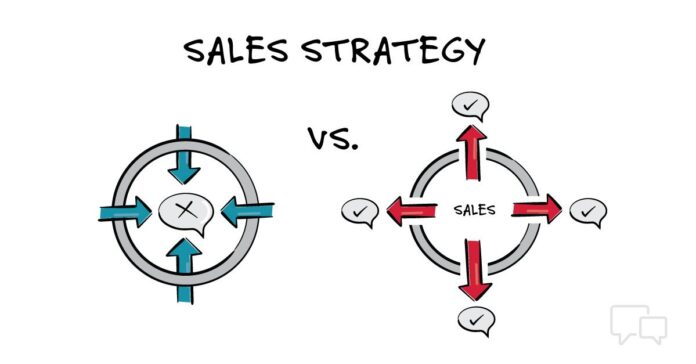A sales strategy addresses sales-related operation. It is a comprehensive playbook that
outlines everything a salesman could need to know about the goals they are pursuing at
their organisation, including:
-Action steps to take Team members, their specialised roles, and the skills necessary to do
their jobs
-Potential difficulties and drawbacks
-Short-term and long-term objectives for each person and the entire team
-What data and KPIs do they enter in the sales CRM and how they interconnect and interact with the rest of the team
Effective sales strategy should be highly detailed and should lay out for your salespeople all
the different actions they must take in order to contribute to the achievement of the
organization’s goals.
The 7 steps for planning effective sales strategy:
Although your sales strategy will be unique to your company’s current operating situation
and long-term objectives, most sales managers may construct one to suit their needs using a
reasonably common method.
You’ll learn where to begin and what to include in your sales plan by following these seven
Stages:
1. Specify your goal.
Planning a sales call, or any other commercial venture, should always begin with a clearly
stated purpose. Is it your goal to gain a reputation as a reliable advisor? Close a certain
transaction? You can structure subsequent stages to accomplish your main goal once you’ve
identified it.
2. Assess the current circumstance.
An objective evaluation of the circumstance, which will be related to the objective you
established in the first phase, comes next on the list. An assessment of the current scenario
might include describing your current relationship with the consumer if your goal is to
strengthen that relationship.
3. Identify barriers to success.
One of the most important steps to reaching your objectives is this one: Make a thorough
list of the challenges you face. Knowing exactly what you’re up against may be immensely
motivating and inspire fresh suggestions for how to get through obstacles.
4. Determine your advantages and strengths.
Consider how you can use your resources to accomplish your goal after taking an honest
assessment of them. Personal connections, sales tools, competitive advantages like new
products, and a wide range of other things can all be considered strengths and assets.
5. Develop a plan for your sales calls.
Using the data, you have gathered in phases one through four, create your sales plan by articulating your strategy for achieving your objective. Your strategy may include the selling of a certain product and the techniques you’ll employ to persuade your prospect, depending on the circumstances.
6. Determine your necessities.
After you’ve established your fundamental plan, it’s time to list the materials you’ll need to complete the task. Items like a sales deck or demo programme might be necessary for you. A list of accounts could also be one of the requirements. Understanding demands up front is crucial.
7. Outline a path of action.
The sales call approach mentioned in step five has an accompanying document called an action plan: It is a list of tactical tasks you must complete to carry out the strategy. The action plan may include details like settling on a price with your business before you close the deal.
Achieving a significant goal needs careful planning in almost every other area of life, whether it’s hosting an event, winning a baseball game, or creating a travel itinerary. The same is true for sales: Having a solid game plan can boost your confidence and allow you to concentrate on every new chance, regardless of how much experience you have.
You may develop a thorough sales plan that will enable you to comprehend your issues and make the most of your assets by following these seven stages. You can develop the selfassurance you need to seek new sales prospects and succeed with advance planning.






























